 |
Welcome to In The Village on False Creek, a unique project inspired by Live@YVR and 365 Days of Dining. I've moved my family into this community with my mission being to showcase the myriad of things that make it awesome by bringing you a weekly scoop! |
Yesterday I shared THIS story of how salmon returned to an East Vancouver creek for the first time in 80 years thanks to a plan that the City of Vancouver is working on over the next 50 years. In that time they'll be working on the beautification, protection and restoration of sections of Still Creek that run through our city, with the intention of turning it from one of the most polluted waterways in BC to one that might actually yield edible salmon again one day.
Also, a while back I told you about the Georgia Strait Alliance fundraiser that I gave THIS talk at, in regards to the storm drain markings in the Village.
Something I have yet to touch on is the gigantic piece of awesomeness in our city that, in my eyes, is one of the greatest Olympic legacies we could ever hope for; the wetlands of the Village and how they - along with other shoreline restoration including Habitat Island - are measurably increasing the health of the water in False Creek. Okay, I already talked about it a little bit by sharing a VIDEO of a heron eating herring in False Creek that weren't there 2 years ago, but I haven't taken you on the tour or told you much about these Wetlands and how they actually improve the quality of storm water before it goes into the creek. It's crucial, and it's the only place in Vancouver in which the stormwater doesn't just go directly into the ocean.
So let's start at the beginning. Hinge Park is the large piece of land on the very West side of the Village, where there's our community garden, dog parks, trails, playground, fields, Habitat Island and of course the wetlands. Here's the top of them.
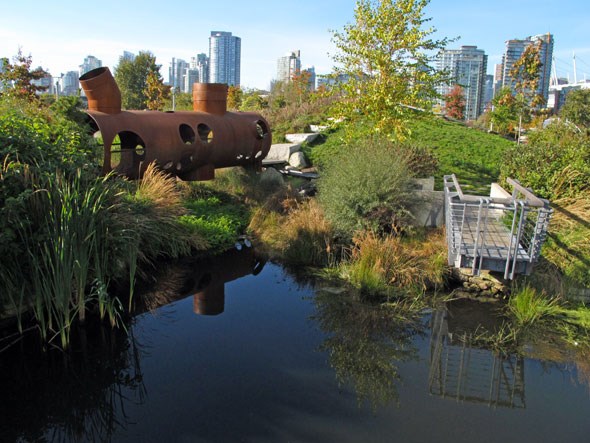
If you come along on one of the walking tours we're doing with Margot from PWL Partnership (HERE is the first one, we'll be announcing another soon), the landscape architecture firm who designed and implemented the wetlands, she'll tell you all kinds of interesting stuff. One being that they're not just there for show; the water from the streets goes into the storm drains in the Village and ends up draining into this beautiful area that has become a habitat for ducks and herons.
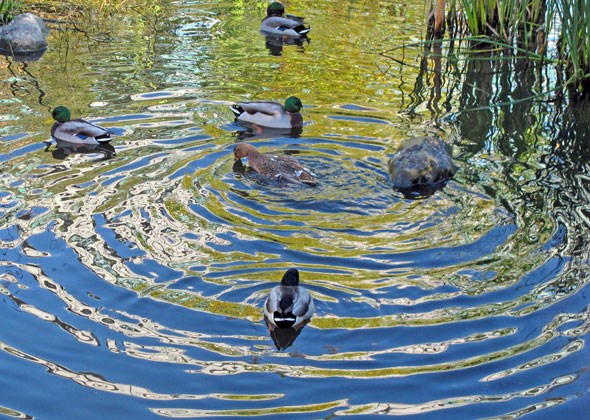
This giant piece of steel pictured below is meant for kids to play in, is also a piece of public art, and it's actually an old underground storm drain like the ones all around the rest of False Creek which drain directly into the ocean, unfiltered.
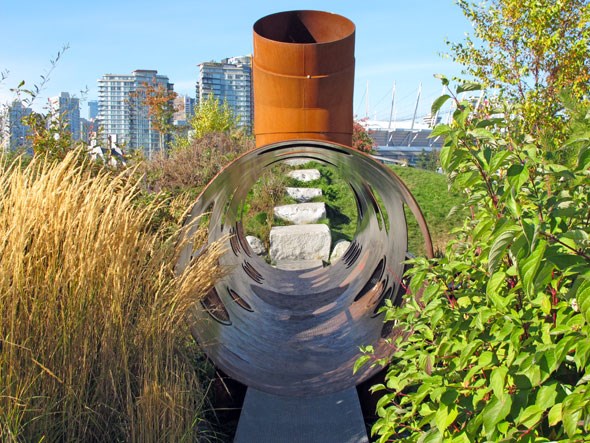
Think of the neighbourhood you live in, then picture all of the water that goes down the storm drains from the street when it rains. It's full of garbage, oil, fuel and other stuff, and unless you live in the Village on False Creek that water from your neighbourhood is getting dumped directly into the ocean. The wetlands take in our storm water and it slowly makes its way through plants and this short waterway, filtering out the yuck, and when it makes it to the end, near the outfall, the water is actually pumped right up to the top again so it can be filtered naturally again.
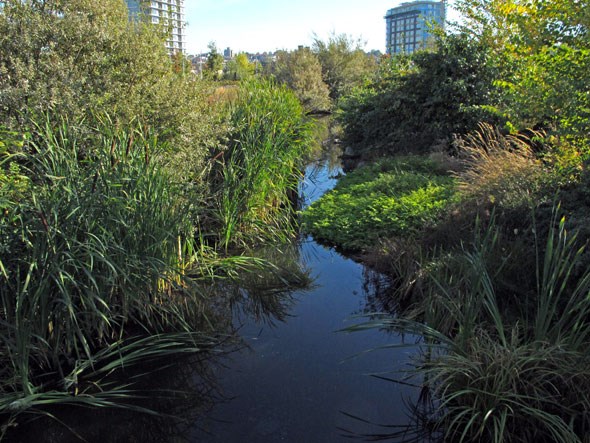
Once there's enough water in the wetlands that it makes it to the top of the border as shown here, it overflows and goes into the ocean, filtered and less contaminated than any other storm water entering False Creek.
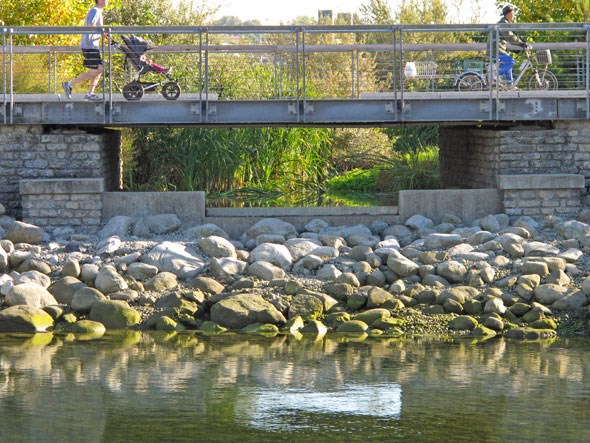
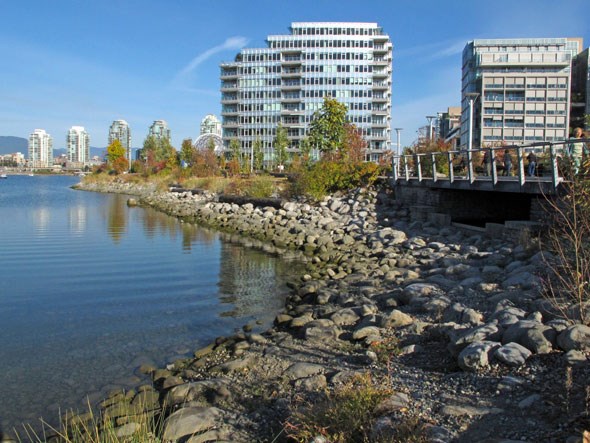
BONUS! CONSTRUCTION PHOTOS!
I asked my friends at PWL Partnership (mentioned above) if they had any photos of the wetlands during construction to share with us. If you were around during the construction you'll remember that it seemed like a really odd water feature was going in. It didn't look natural at the time, with chicken wire and 2x4s propping stuff up, and there were some humorous phallic logs with 2 large boulders on either side holding them in place. Below is what this grown in space looks like now, it's one of many points where you can hang out and look into the wetlands...
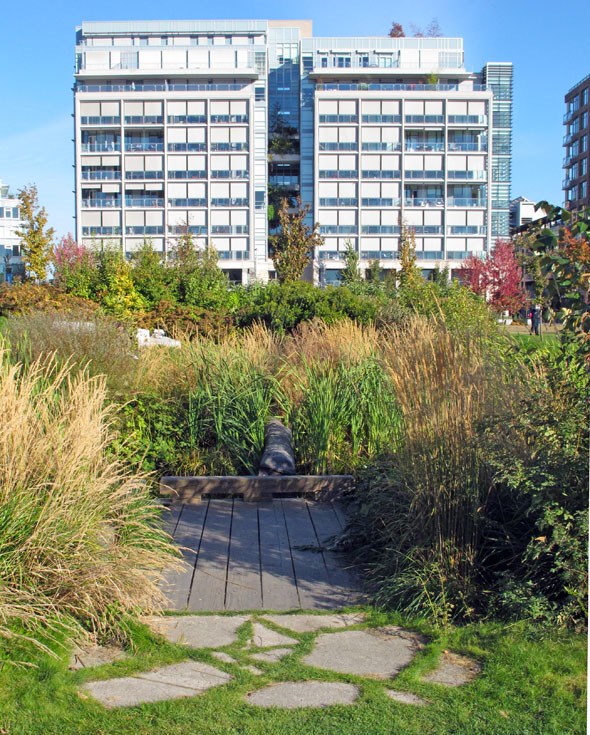
And here it is from another angle during construction, before a lot of the plant life was introduced.
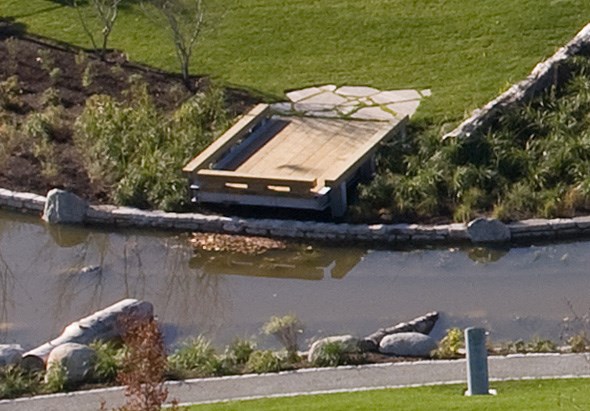
Click this photo below to see a larger overview image of the construction from 2009.
This is one of the many reasons why ours has been dubbed the greenest neighbourhood in North America, beyond all of the building being LEED certified. This storm water system is one that quite simply is making the water quality better in False Creek, and in the future we can only hope that every neighbourhood has something similar in place.
Learn more at TheVillageOnFalseCreek.com and stay tuned each week as I expose the unique qualities of our new community.



